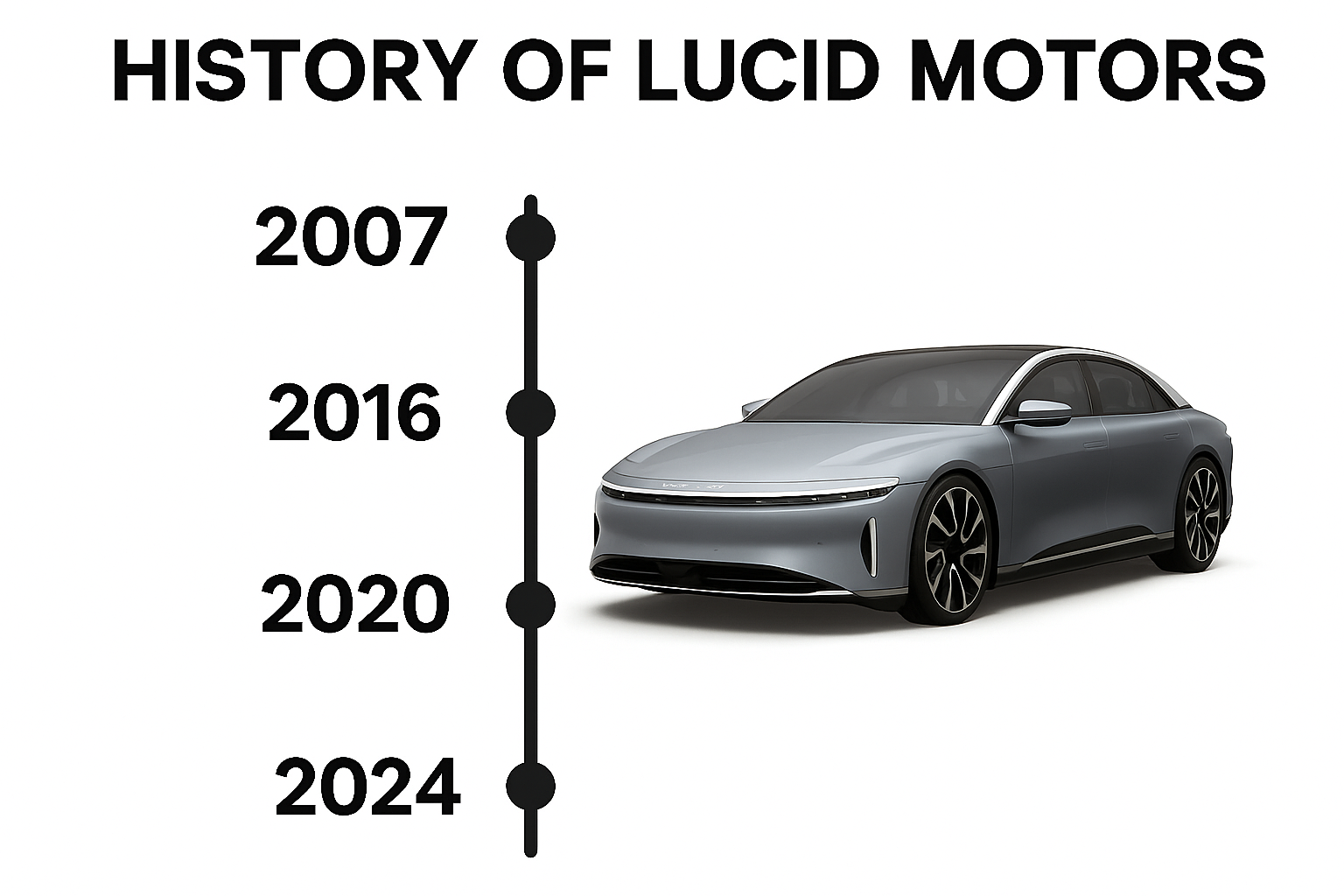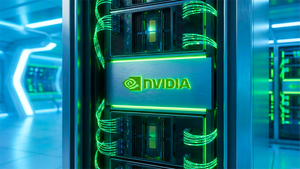
Introduction: A New Player With Lofty Ambitions
When it comes to the electric vehicle (EV) revolution, names like Tesla and BYD often dominate the headlines. Yet, over the past decade, another ambitious automaker has steadily carved out a distinct niche in the luxury EV segment: Lucid Group. Known for its high-performance sedans, cutting-edge technology, and relentless pursuit of excellence, Lucid’s journey from concept to major contender offers a fascinating window into both the promise and peril of disrupting the auto industry.
Founding Visionaries: The Early Years of Atieva
Lucid’s roots stretch back to 2007, when Bernard Tse, Sam Weng, and Sheaupyng Lin—three accomplished Silicon Valley professionals—founded the company originally known as Atieva. Their initial mission was to power the future of mobility through advanced battery technology and electric drivetrains.
- Bernard Tse, a former executive at Tesla, served as Atieva’s first CEO and played a pivotal role in shaping the company’s strategic direction. His deep automotive and business experience provided Atieva with instant credibility in a fledgling industry.
- Sam Weng, with a background in technology startups, became Atieva’s President and COO. His operational expertise helped the company attract engineering talent and secure early funding.
- Sheaupyng Lin, a technical expert in advanced batteries and power electronics, helped develop Atieva’s proprietary battery technology—a foundation that remains central to Lucid’s vehicles today.
Atieva spent its early years developing high-performance battery packs and electric powertrains, supplying technology to other automakers. The founders recognized that electrification was the future, and they positioned Atieva at the forefront of the EV component market. Their combined vision, technical prowess, and entrepreneurial drive laid the groundwork for what would become Lucid Motors.
Transformation: From Atieva to Lucid Motors
As the EV industry matured, so did Atieva’s ambitions. By 2016, the company rebranded as Lucid Motors, signaling a transition from component supplier to full-fledged automaker. The goal: to build the world’s most advanced, luxurious electric vehicles and compete head-to-head with the industry’s best.
Leadership Evolution: The Arrival of Peter Rawlinson
A pivotal moment in Lucid’s history came with the arrival of Peter Rawlinson. Originally from Wales and with a career that spanned Jaguar, Lotus, and most notably Tesla (where he was the chief engineer behind the Model S), Rawlinson brought to Lucid a rare combination of engineering vision and operational know-how.
Rawlinson joined Lucid as CTO and later took on the CEO role, building upon the strong foundation established by Tse, Weng, and Lin. His hands-on approach and obsession with detail drove Lucid to pursue not just incremental improvements, but a radical leap in EV technology. Rawlinson envisioned Lucid as both a luxury automaker and a technology company—one that could deliver best-in-class range, efficiency, and driving experience.
Funding, Factories, and the Lucid Air
Building a car company from scratch is capital intensive. Lucid attracted significant investment, but the real breakthrough came in 2018 when Saudi Arabia’s Public Investment Fund (PIF) injected over $1 billion into the company. This enabled Lucid to break ground on its Arizona-based AMP-1 manufacturing facility—the first greenfield EV factory in North America built specifically for luxury electric vehicles.
After years of teasers and prototypes, Lucid finally unveiled the production version of the Lucid Air in 2020. The sedan immediately captured attention for its staggering specifications: over 500 miles of range on a single charge, supercar-like acceleration, a spacious and futuristic interior, and advanced driver-assist technology. Critics and EV enthusiasts hailed it as a true challenger to Tesla’s Model S, particularly in terms of range, luxury, and performance.
IPO and Public Scrutiny
As Lucid approached mass production, going public became a strategic imperative. In July 2021, Lucid merged with Churchill Capital Corp IV, a special purpose acquisition company (SPAC), propelling it onto the Nasdaq under the symbol (NASDAQ: LCID). The move netted Lucid over $4 billion, helping scale operations, expand the AMP-1 plant, and accelerate future vehicle development.
The IPO was met with considerable hype, with Lucid’s market cap at times exceeding that of legacy automakers. Yet, Wall Street’s expectations quickly turned from the visionary to the practical: could Lucid ramp up production, meet delivery targets, and become profitable in a sector infamous for high burn rates?
Production Challenges and Strategic Shifts
Like many EV makers, Lucid’s early years as a public company were marked by production bottlenecks, supply chain headaches, and shifting macroeconomic winds. Semiconductor shortages, rising raw material costs, and fierce competition from both upstarts and established automakers tested Lucid’s resilience.
The company’s initial focus remained on the luxury market. The Lucid Air’s Dream Edition and subsequent models won critical acclaim and prestigious awards, but high price tags limited mass adoption. Recognizing this, Lucid began development on the Gravity SUV and hinted at more affordable models to come, aiming to expand its addressable market.
Lucid also doubled down on technology. Its proprietary battery and drive units, over-the-air updates, and in-house software platforms became central selling points, helping position Lucid as more than just another EV builder, but rather a vertically integrated technology company.
International Expansion and a New Chapter
By 2024, Lucid started expanding beyond North America, targeting markets in the Middle East (thanks in part to its Saudi backers), Europe, and Asia. The company signed key agreements for local production and sales, hoping to tap into lucrative luxury car markets abroad. Lucid also entered the energy storage sector, leveraging its battery expertise for grid-scale solutions—an echo of Tesla’s broader ambitions.
Despite persistent financial losses, Lucid continued to attract loyal customers and a devoted following among EV enthusiasts. The company’s attention to detail, performance benchmarks, and bold design ethos kept its brand cachet high, even as quarterly earnings often fell short of bullish analyst projections.
Looking Ahead: Lucid’s Place in the EV Landscape
Today, Lucid stands as a testament to both the opportunities and challenges of building an automotive disruptor from the ground up. Its flagship Air sedan has pushed the boundaries of what’s possible in an electric vehicle, earning a place among the industry’s elite. The upcoming Gravity SUV and future mainstream offerings could help Lucid achieve the scale needed for sustained profitability.
Yet, questions remain: Can Lucid weather ongoing economic volatility? Will it fend off mounting competition from both Western and Chinese EV giants? Is there enough demand for high-end electric vehicles to justify continued expansion?
Only time will tell. But whatever the outcome, Lucid’s bold history—from the technical vision of Tse, Weng, and Lin, to the engineering-driven leadership of Peter Rawlinson—has already made a lasting mark on the rapidly evolving world of electric mobility.
Disclaimer: This article is for informational purposes only and does not constitute financial advice. The author and publisher are not responsible for any investment decisions based on the content provided. Please conduct your own research or consult a professional advisor before making investment choices.




